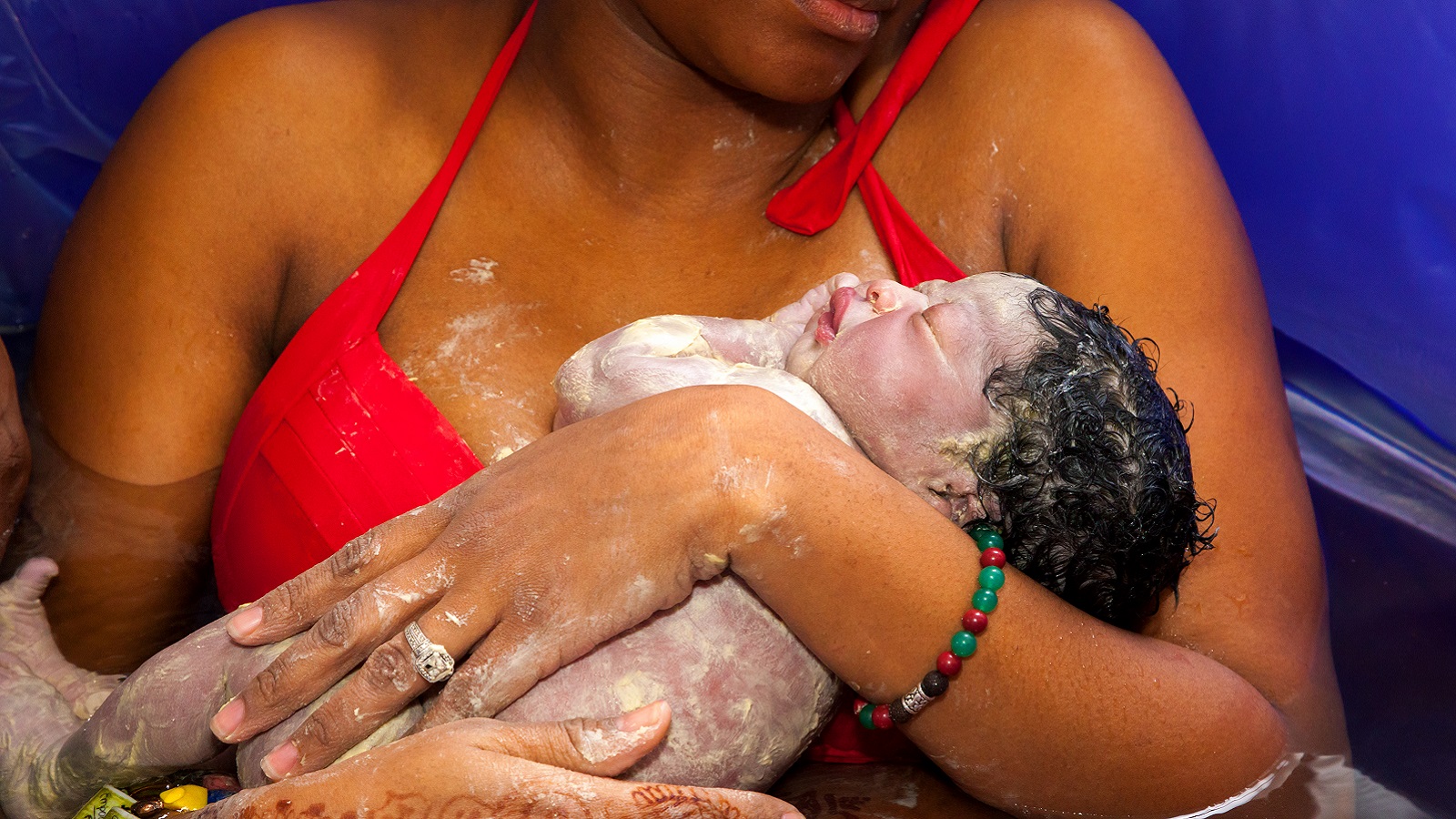After working the night shift, Mandy, now five months pregnant, travels close to two hours on public transportation to make it to her prenatal appointments. The day before, I send her a text message with a reminder and ask whether she plans to get the gumbo special of the day or a grilled cheese with tomato from the hospital’s surprisingly delicious cafeteria. As a first-year medical student, I am participating in a program that trains me to provide additional support to a pregnant patient who I’m partnered with for the duration of her pregnancy and postpartum care. My medical knowledge may be limited, but my instincts for hunting down good, cheap food are keen.
Mandy’s pregnancy was progressing into the final trimester, requiring weekly prenatal appointments, when COVID-19 first hit and put a halt on much of our daily lives. While we chatted at prenatal appointments about what music Mandy would listen to while in labor, our world was entering lockdown. Very soon after, labor and delivery units around the country implemented strict policies to reduce transmission of the virus.
Seemingly overnight, the vast majority of hospitals restricted visitation privileges to a single personal or professional visitor per pregnant patient in an attempt to stifle transmission of the novel coronavirus. This well-intentioned policy, though, aimed at protecting patients and healthcare workers alike, has garnered some negative consequences. These policies have meant that patients like Mandy must choose between in-person support from a family member or loved one during childbirth or a professional support person (e.g. doula), because they cannot have both. Doulas are professionally trained to provide continuous emotional, physical, and informational support to a patient before, during, and after childbirth.
The World Health Organization (WHO) and American College of Obstetricians and Gynecologists (ACOG) recognize the importance of continuous companionship during labor. It’s a practice shown to improve health outcomes for mother and baby, including shorter labor times, increased rates of spontaneous vaginal delivery (as opposed to cesarean delivery), increased satisfaction with the childbirth experience, and improved neonatal wellbeing. Studies show even better outcomes when that support person is a doula.
Despite this evidence, hospital policies in the wake of the COVID-19 pandemic have forced pregnant patients to pick just one person to offer the support that historically has been offered by an entire village. And further, Black and Indigenous patients are especially at risk, particularly as maternal mortality rates for these communities are two to five times higher compared to those of white women.
Additionally, we know that COVID-19 has disproportionately harmed Black, Indigenous, and Latinx communities. How do we begin to address these disparities if we eliminate a proven practice known to improve the quality of care?
We must protect our healthcare workers from exposure, and we must also ensure steps are taken to safeguard outcomes for our most at-risk populations. We must not turn doulas away from obstetrics units but rather, make space for them by establishing thoughtful policies. This can be done by prioritizing doulas with other frontline healthcare workers in COVID-19 vaccine rollout, as well as ensuring rapid COVID testing is available to doulas attending in-hospital deliveries. These measures ensure continuous-presence personnel are treated as essential members of the care team, not as hospital visitors.
Even though I wasn’t able to attend Mandy’s delivery due to our hospital’s COVID-19 policy, she kept me updated via text message. After a long, difficult labor, without any support person, Mandy delivered a healthy baby girl. While Mandy and her baby made it through without major complications, it’s important that we carefully navigate visitor policies in the context of the COVID-19 pandemic, while also keeping a health equity lens. It’s a delicate balance as we seek to reduce COVID-19 transmission, though Mandy, and myriads of others like her, deserve more robust labor and delivery support.
**Feature photo obtained with standard license on Shutterstock.
Interested in other articles like this? Subscribe to our bi-weekly newsletter
Interested in contributing to the Harvard Primary Care Blog? Review our submission guidelines

Rebecca Kolodner is a second-year medical student at The George Washington University School of Medicine & Health Sciences. She graduated from Washington University in St. Louis with Bachelor of Arts degrees in Philosophy-Neuroscience-Psychology and Spanish. She currently serves in leadership for ACOG's Teen Promise Project to promote comprehensive sexual health education in DC public schools during virtual learning. Her professional passions include sexual & reproductive health, social determinants of health, and immigrant health.
- Share
-
Permalink


